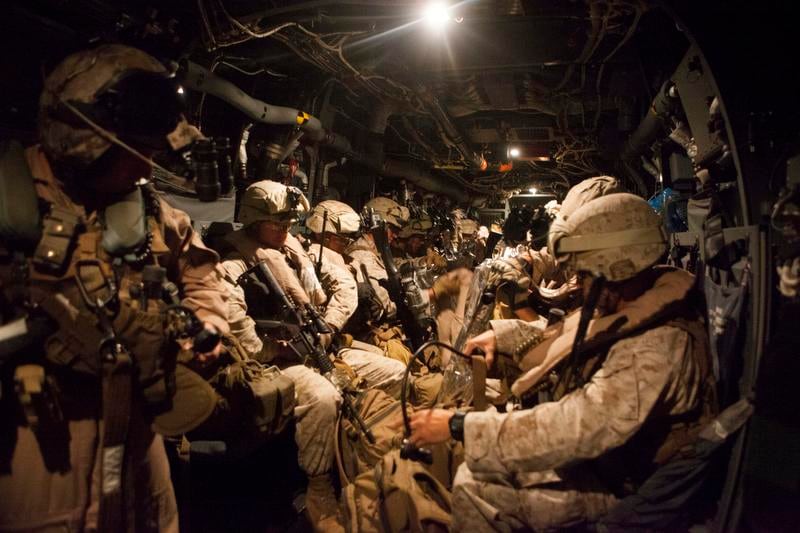Six of the 12 MV-22B Ospreys based in Spain will be sent to a base in the U.S. next year to train crews and give Osprey squadrons more time at home, officials said.
Sending half of the MV-22Bs home is a tradeoff because it allows the Marines to keep the other six Ospreys forward-deployed in Spain, said Marine Gen. Joseph Dunford, chairman of the Joint Chiefs of Staff.
"I'm not happy that we had to reduce the number from 12 to six," Dunford told senators April 27. "That does reduce the flexibility, it reduces the depth. I was personally involved in that decision. We were balancing risk on two sides."
Special Purpose Marine Air Ground Task Force-Crisis Response-Africa will still be able to respond to crises with the six remaining Ospreys, said Maj. Richard Ulsh, a spokesman for U.S. Marine Corps Forces Europe and Africa.
Established after the 2012 attack in Benghazi, Libya, that killed four Americans, the Marine Corps' crisis response unit is tasked to rapidly reinforce U.S. diplomatic outposts in Africa and Europe that come under attack. The Ospreys allow the Marines to arrive at hard-to-reach places in Africa on short notice.

A quick reaction force with Special-Purpose Marine Air-Ground Task Force Crisis Response prepares to depart Naval Air Station Sigonella, Italy, in support of a military assisted departure from the U.S. Embassy in Tripoli, Libya, on July 26, 2014. The Osprey unit based in Spain will lose six of its 12 aircraft.
Photo Credit: 1st Lt. Maida Kalicit/Marine Corps
In July 2014, two of the unit's Ospreys escorted a ground convoy from Tripoli to Tunisia when the U.S. evacuated its embassy in Libya.
The number of Ospreys assigned to the unit grew from six to 12 after the special purpose task force was established in 2013 at Morón Air Base, Spain, said Marine Corps spokeswoman Capt. Sarah Burns.
MV-22B squadrons are constantly deploying because the Osprey is in high demand, so Osprey pilots, aircrews and maintainers are getting the bare minimum of time home between deployments, which the Marine Corps refers to as a "depth-to-dwell time," Burns said.
"The time that we are deployed compared to the time that we are home is 1:2," Burns told Marine Corps Times. "That means that for every one day deployed; theoretically, you're supposed to get two days back home. It used to be 1:3 before we started deploying a lot. Within the past 15 years it's gone back to 1:2."
Transferring the six Ospreys from Spain to the U.S. gives Osprey squadrons more time at home to "alleviate the constant stress of deploying on our pilots and maintainers," and that will help the Marine Corps' overall plan to restore readiness to its aviation fleet, Burns said.
Marie Corps Times recently reported that the mission-capable rates for Marine rotary- and fixed-wing aircraft has plunged in recent years due to budget cuts. Commandant Gen. Robert Neller has said that restoring Marine aviation readiness is his primary concern.
"We're really focused on recovery and getting our aircraft back to where they need to be," Burns said.




